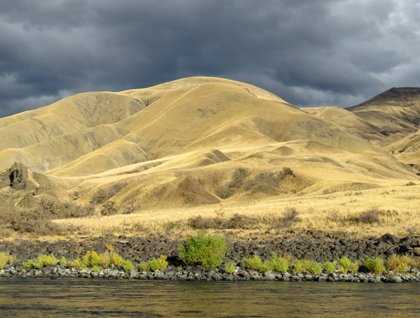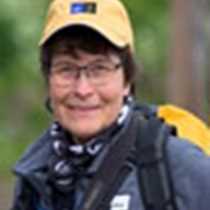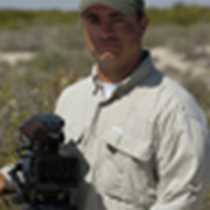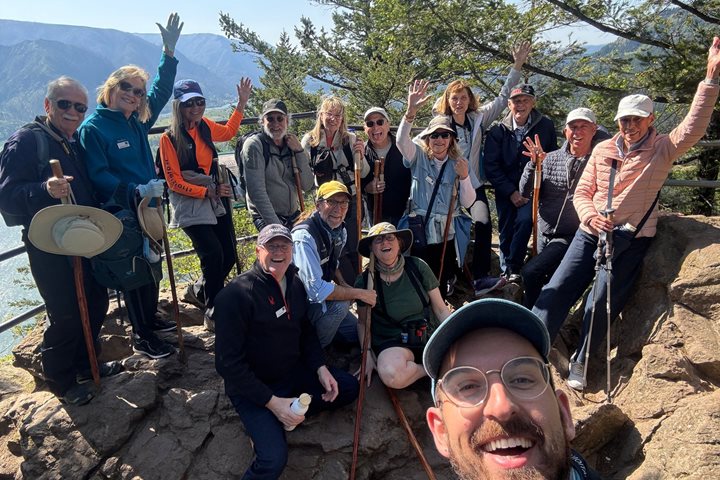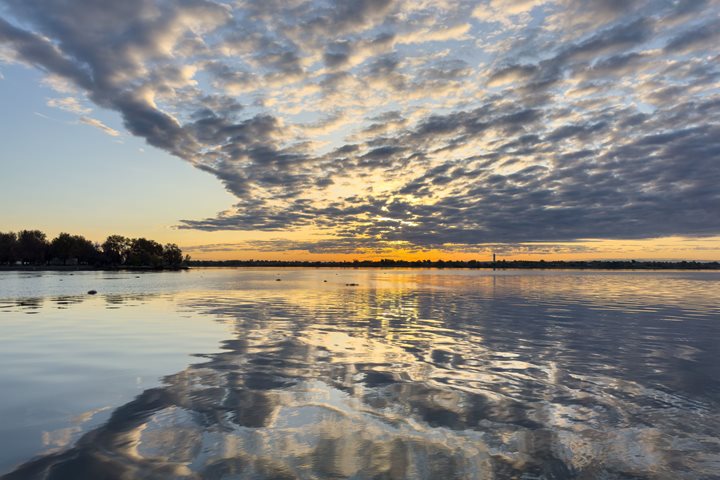First light brightens the surface of the Snake River at 0620 hours as we sail toward our morning destination of Clarkston, Washington. The temperature is 54 degrees Fahrenheit and the sky mostly clear. A waning gibbous moon rides high in the southern sky. Soon Captain Kay is maneuvering National Geographic Sea Bird alongside the dock and Bos’n Nikki jumps off to make the lines fast.
Right after breakfast we board jet boats for our trip into Hells Canyon, one of the most rugged, remote, and scenic canyons in our country. Here the Snake River has cut down through millions of years of Columbia River basalts and exotic accreted terranes to form a chasm deeper than the Grand Canyon. In the heart of the canyon, He Devil, of the Seven Devils Mountains, rises more than 8,000 feet above the river. Once underway in our jet boats the sun is shining, the air is crisp and bracing, and puffy white cumulus clouds float in the cerulean sky. Trees along the river burn bright gold in the morning sun. American coots and mallards forage along the edge of the river while small skeins of Canada geese wing their way past us, calling as they go.
We make our first stop across the river from the “place of eels” Asotin, Washington. Here, for thousands of years the native people came to fish for eels. We are stopping to see an amazing outcrop of columnar basalt. There is no simple explanation for this complex arrangement of these curved columns, but it is wonderful just to see it. We pass the mouth of the Grande Ronde River and see Columbia River Basalt lava layers 3,000 feet thick that are named for this river. Just upstream of the Grande Ronde we pass out of the basalt and into the exotic terranes that we have learned about; this begins with an impressive limestone outcrop—here we make our official entry into Hells Canyon.
Our morning stop is at Cache Creek Ranch, a green oasis amid the rocks and brown, grass-covered hills. Back on our jet boats we roar on upriver, careening through several rapids until we reach the confluence of the Snake with the Salmon River, the fabled “River of No Return.” This is our turn-around spot and we head back down-river, stopping at Garden Creek Ranch, a Nature Conservancy site for lunch. We enjoy our meal on a deck overlooking the river. Mule deer graze in an irrigated apple orchard and it is a peaceful place to spend some time and take a stroll around the grounds.
Back at the National Geographic Sea Bird some of us take a motor coach to the Nez Perce National Historic Park where we see a collection of beautiful Nez Perce artifacts from the 1800s. In the evening we enjoy our last social hour and the Captain’s Farewell dinner.

